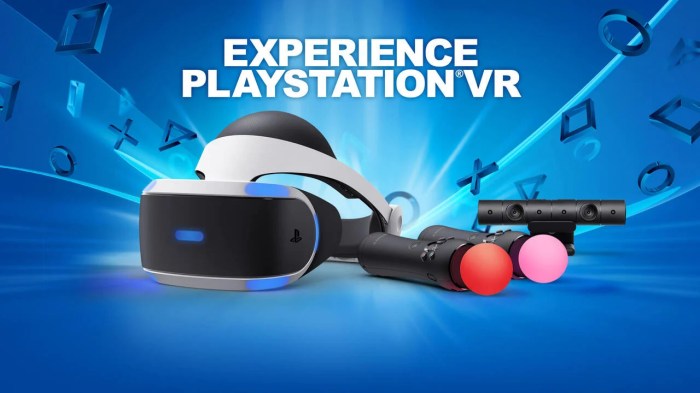PlayStation VR shortages at launch were a major issue for Sony, reflecting the immense hype surrounding the new technology. Pre-orders were sky-high, and early reviews were positive, fueling consumer demand. This, coupled with production challenges and global supply chain disruptions, created a perfect storm for a shortage that left many gamers frustrated.
The initial demand for PlayStation VR far outstripped the available supply, with limited production runs and pre-order systems exacerbating the problem. Scalpers and online resellers took advantage of the situation, further limiting the availability of units for those who wanted them.
The Role of Technology and Innovation: Playstation Vr Shortages At Launch
The widespread adoption of PlayStation VR (PSVR) at its launch was driven by a confluence of technological advancements and the allure of immersive gaming experiences. The rapid evolution of virtual reality (VR) technology played a pivotal role in shaping consumer demand and the challenges faced by Sony in meeting it.
Technological Advancements Driving Demand
The increasing affordability and accessibility of VR technology were key factors in the surge of demand for PSVR. Advancements in display technology, particularly the development of higher-resolution screens and improved tracking systems, contributed to a more immersive and realistic VR experience.
- The PSVR headset, with its relatively low price point compared to other VR systems, made VR accessible to a broader audience, enticing gamers who might have previously considered it too expensive.
- The integration of the PSVR with the PlayStation 4 console, a popular and established gaming platform, simplified setup and ensured compatibility with a wide range of games and applications.
Impact of New VR Content and Experiences
The emergence of compelling VR content, specifically designed to leverage the unique capabilities of the PSVR, significantly fueled consumer interest. Developers embraced the immersive nature of VR to create novel and engaging experiences that transcended traditional gaming formats.
- Games like “Resident Evil 7: Biohazard” and “Batman: Arkham VR” delivered immersive and engaging experiences that capitalized on the immersive nature of VR, captivating players with their unique perspectives and interactions.
- Beyond gaming, VR applications in entertainment, education, and healthcare began to gain traction, further broadening the appeal of VR technology and attracting a diverse audience.
Rapid Pace of Innovation in VR, Playstation vr shortages at launch
The rapid pace of innovation in VR, characterized by constant advancements in hardware and software, contributed to supply chain challenges. The relentless drive to improve VR technology and deliver increasingly sophisticated experiences often outpaced the ability of manufacturers to scale production.
- The demand for components like displays, sensors, and processors, often manufactured with specialized processes, outstripped supply, leading to shortages and delays.
- The continuous introduction of new VR headsets and accessories with enhanced features and functionalities created a dynamic market, making it challenging for manufacturers to anticipate demand and adjust production accordingly.
Impact on the Gaming Industry
The launch shortages of PlayStation VR had a significant impact on the gaming industry, affecting both the adoption of VR technology and the future of VR gaming.
Impact on VR Adoption
The shortages created a sense of scarcity, leading to increased demand and hype surrounding the technology. This, in turn, contributed to a faster adoption rate for VR gaming, as consumers were eager to experience the latest innovation. However, the limited availability also created challenges for widespread adoption. Many potential consumers were unable to purchase the device, hindering the overall growth of the VR market.
Influence on Future of VR Gaming
The launch shortages served as a learning experience for the gaming industry. Developers and manufacturers recognized the importance of meeting consumer demand, particularly for innovative technologies like VR. This led to a greater emphasis on supply chain management and production capacity for future VR devices. The experience also highlighted the potential for VR gaming to become a mainstream entertainment option, driving further investment and development in the field.
Lessons Learned for Future VR Launches
The launch of the PlayStation VR in 2016 was a significant milestone in the history of virtual reality gaming. While it was a successful launch, it also presented valuable lessons for future VR launches. By analyzing the challenges and successes of the PlayStation VR launch, manufacturers can better prepare for future VR releases and ensure a smoother transition for both consumers and the industry.
Understanding Market Demand and Supply Chain Management
The PlayStation VR launch was met with high demand, which led to initial stock shortages. This highlighted the importance of accurately forecasting market demand and managing supply chain logistics effectively. Manufacturers need to consider the following strategies:
- Accurate Demand Forecasting: Manufacturers need to conduct thorough market research to estimate demand accurately. This involves considering factors such as pre-orders, industry trends, and competitor activity.
- Scalable Production: Manufacturers should ensure that their production capacity is scalable to meet potential surges in demand. This might involve partnering with multiple suppliers or investing in flexible manufacturing facilities.
- Efficient Supply Chain: A well-managed supply chain is crucial for delivering products on time. This includes optimizing logistics, warehousing, and transportation to ensure timely delivery to retailers.
Epilogue
The PlayStation VR launch shortages served as a valuable lesson for both Sony and the VR industry as a whole. It highlighted the need for better production planning, more efficient supply chains, and proactive communication with consumers. While the shortages may have impacted initial adoption rates, the long-term success of PlayStation VR is ultimately tied to the quality of its content and the continued evolution of VR technology.
The PlayStation VR launch was marred by shortages, leaving many eager gamers disappointed. While the tech world is busy speculating about Google Search potentially adopting a Material Design UI , it’s a reminder that even with advanced technology, supply chain issues can still hinder a product’s success.
Hopefully, the next generation of VR headsets will have a smoother launch.
 Securesion Berita Informatif Terbaru
Securesion Berita Informatif Terbaru
